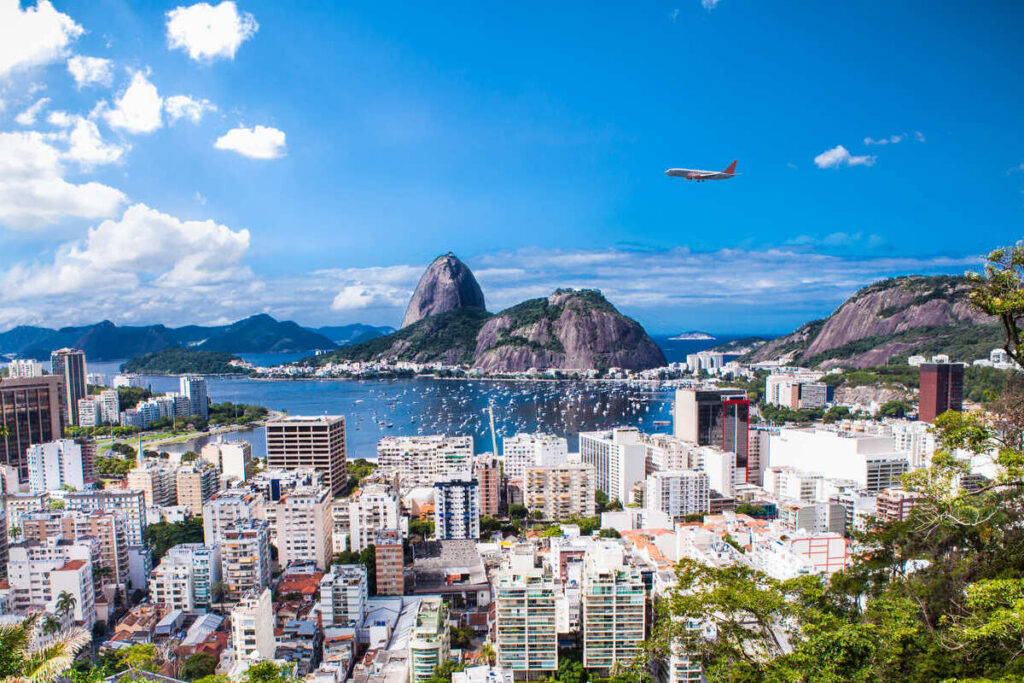No products in the cart.
Travel Guide
This Is How Hard It Will Be For Americans To Visit Brazil From October
Last Updated
Having remained open for tourism throughout the health crisis and often portrayed as one of the most welcoming countries in South America, Brazil left American travelers dismayed at the decision to reimpose visa requirements that had been lifted in 2019.

From October, U.S. citizens, as well as Canadians — will no longer enjoy visa-free access to Brazil, like their European and British counterparts.
Unless they hold a pre-issued visa, which must be shown at the airport counter, they will not be allowed boarding.
This is hardly news to those who had visited Brazil prior to 2019, but it may come as a shock to first-time visitors, especially considering how hard it will be to apply for a visitor visa:
Why Is Brazil Making It Harder For Americans To Visit?

While it’s common for developing nations subject to visa restrictions by the U.S. to drop visa requirements for U.S. citizens, or at least make them less cumbersome, usually in a bid to boost tourism, it is not guaranteed that they will.
In these cases, e-Visas or VOAs (Visas On Arrival) are commonly introduced as a solution to the reciprocity issue.
After all, citizens of only 40 countries out of 195, primarily in Europe and high-income Asian countries, can enter the United States visa-free.
Top 5 Travel Insurance Plans For 2023 Starting At $10 Per Week

Traveling to Turkiye, Vietnam, Indonesia, and numerous other popular tourist destinations, Americans must either apply for an online travel permit or pay a fee and apply for a visa directly at the airport of arrival.
This is only a minor nuisance for most, as e-Visas and VOAs are quite easy to obtain.
They are not traditional visas and are less bureaucratic, and do not affect the freedom of movement of U.S. citizens.
They can apply for the permit from the comfort of their homes by filling out an online form or simply landing at their destination.
Being non-visa exempt, however, is a whole other ball game.

Recently, Brazil has announced it will reinstate its reciprocation policy by reintroducing visa requirements on nationals of foreign countries that do not grant Brazilians visa-free entry.
Currently, Brazilians can travel to 171 nations visa-free, or 90.48% of the world, making it a fairly friendly nation and the Brazilian passport one of the top 20 most powerful.
Regrettably, the United States is not of those states that have signed a visa-waiver agreement with South America’s largest economy.
This means that, as soon as October 1, 2023, Americans will be barred entry unless holding a valid tourist or long-term residency visa.
How Hard Will The Brazilian Visa Be To Obtain?

Brazil’s reciprocity measure is also quite literal: the harder a third country makes it for Brazilians to visit, the harder Brazilian authorities will make it for passport holders of that country to visit Brazil, and the United States is known to have some of the strictest visa procedures.
As detailed by the Brazilian Ministry of Foreign Affairs, foreign nationals who do require a visa must, first and foremost, check which kind of visa best serves the purpose of their visit.
A Brazilian Visitor Visa (or VIVIS) would apply to a majority of American applicants:

It enables its holder to stay in the national territory for a period of 90 days, allowing for sightseeing, visiting family or friends, attending business meetings and conferences, and other leisure or business-related activities.
When applying for other visa categories, such as the recently-launched Brazilian Digital Nomad Visa (BrDNV), or a work permit, Americans may be eligible to remain in the country for a longer period while working remotely and/or accessing the job market.

After identifying the correct type of visa that applies to them, U.S. citizens must then collect the relevant documentation.
Based on requirements imposed by the U.S. on Brazilian nationals and still applying reciprocity, these may include:
- Proof of paid accommodation*
- Proof of sufficient financial resources for the duration of the stay
- Proof of onward or return ticket
*Or an invitation letter written by a Brazilian national or resident who will be hosting the applicant in their home. This letter may require official registration.

Next, travelers must fill in the online application form, which can be found on the Ministry of Foreign Affair’s official website.
During completion, all the documents that had been gathered in the previous step must be attached to the form itself.
Once the form has been submitted, it is necessary to print and sign the Visa Request Form Receipt, or RER, as it may be required by Brazilian Consular authorities.
Lastly, Americans are expected to fill out a ‘booking request form’, and wait until they are summoned by the nearest Consulate.

For the last step, they can either post all the original documents to the Brazilian Consulate upon paying the fee – this includes your current American passport – or attend a visa appointment, when the visa can either be issued or denied.
Prior to 2019, visa denials were extremely rare and often resulted from a lack of documentation or incomplete applications.
The Consular Section informs that it takes up to 15 working days to process visa requests, but these wait times may be impacted by a surge in demand.
How Much Will The Visa Cost?

The Ministry of Foreign Affairs has also published their latest visa fees, and Americans can expect to pay up to USD $160 for a tourist visa, in response to the United States’ own USD $160 visa fee applying to non-visa exempt applicants, assuming pre-2019 fees will be reapplied.
These changes are due to come into effect on October 1, and Americans who will be traveling to Brazil following the implementation date are urged to plan accordingly.
The new measure applies only to citizens of:
- The United States
- Canada
- Australia
- Japan

All Europeans, including non-EU Europeans, such as Serbian and Turks, the British, and New Zealand nationals can continue traveling to Brazil freely as their countries have signed visa-waiver agreements enabling Brazilians to travel hassle-free.
Traveler Alert: Don’t Forget Travel Insurance For Your Next Trip!
↓ Join Our Community ↓
The Travel Off Path Community FB group has all the latest reopening news, conversations, and Q&A’s happening daily!

SUBSCRIBE TO OUR LATEST POSTS
Enter your email address to subscribe to Travel Off Path’s latest breaking travel news, straight to your inbox.
This article originally appeared on TravelOffPath.com
Source link

